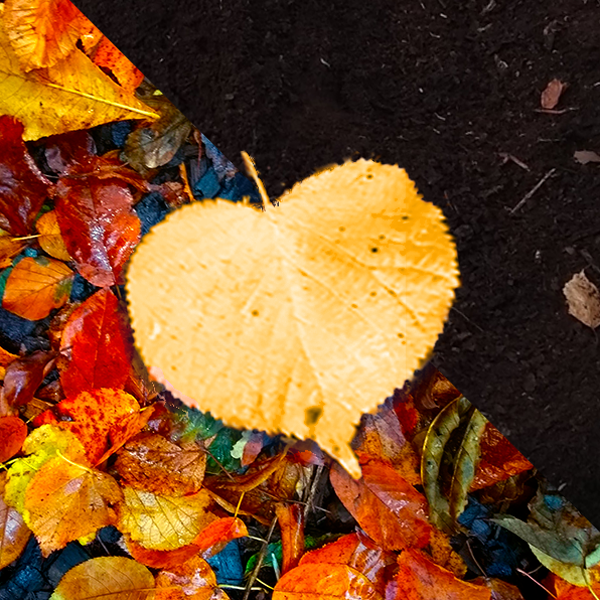In recent years making leaf mould has become just a little bit of an obsession for me.
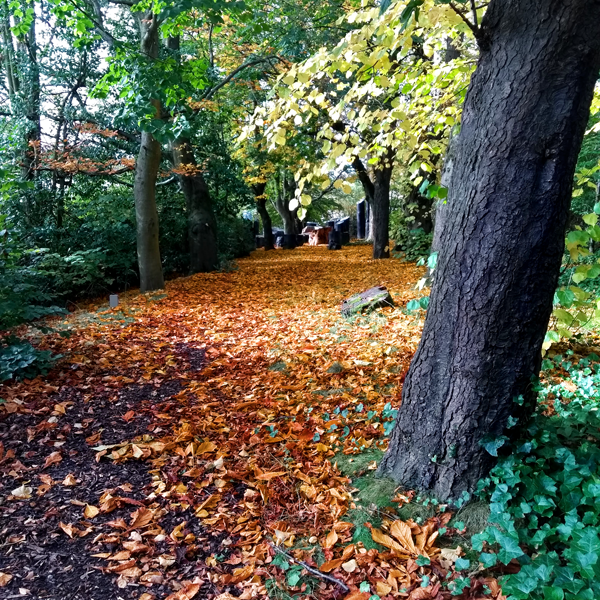
Golden leaves cover a path through the woodland floor 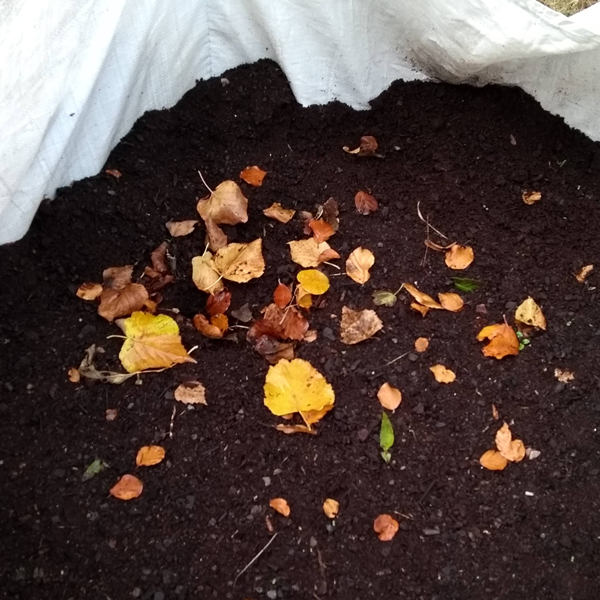
Leaf mould 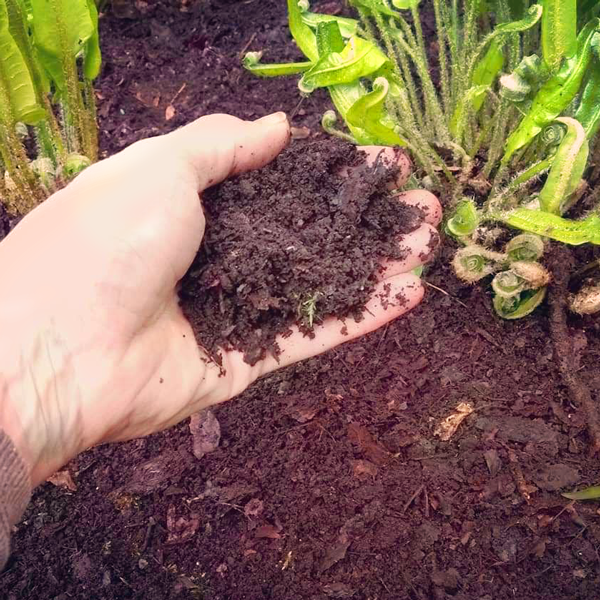
Close up of leaf mould
Let me explain: I have always loved trees for all their rich diversity. The endless variety of shape, colour and texture they contribute to our rural and urban landscapes in equal measures. Their compelling diversity of bark, leaf, blossom and fruit throughout the ever changing seasons and years. Be that the clarity of their winter silhouettes against the low winter sun. The vibrant unfurling of new buds in spring as nature reawakens. Or the billowing fecundity of new leaves forming verdant cushions across the horizon. Never forgetting the rich jewelled pallet of autumn luminosity that lifts the spirits as the days begin to shorten and the temperature dips.
All this and the phenomenal assortment of wildlife that trees support.
Did you know for example that a native oak tree is used by 2300 species (external link) according to research by Dr Ruth Mitchell, of the James Hutton Institute’s Ecological Sciences group? Or that the existence of trees on this earth exceeds our short life spans a thousand fold. The oldest living tree in Scotland, an ancient churchyard Yew in Perthshire. Is believed to be between 3-9,000 years old. (External link)
However it’s the leaves of trees once they fall to earth, that are the focus of my enthusiasm here. Released to fall to earth and slowly degrade their way back into the soil that first fuelled their growth. Leaves to me epitomise the circle of life and the infinite energy of nature and why I garden in the first place.
So what is leaf mould?
The clue is in the name. Leaf mould is the result of fungal action on dead leaves. Unlike garden compost which is predominantly the result of decomposition. When leaves break down it is as a consequence of fungal organisms feeding on them, mouldering them down. Sooner or later the result is that we get lovely crumbly leaf mould.
This happen naturally on the woodland floor. However in managed environments such as gardens it is not always appropriate to let leaves remain where they fall and we do need to clear them up.
Nonetheless it is important to remember that in herbaceous beds, woodland gardens and more naturalised situations, decomposing leaves and vegetation shelter and nurture a large variety of wildlife and organisms. So there is a strong argument in favour of leaving them in place through the winter months.
Given that leaf mould is a natural free resource it’s a no brainer to get going and make your own. Or in fact just collect it all together and let nature do all the work for you. Here’s how.
How to make leaf mould?
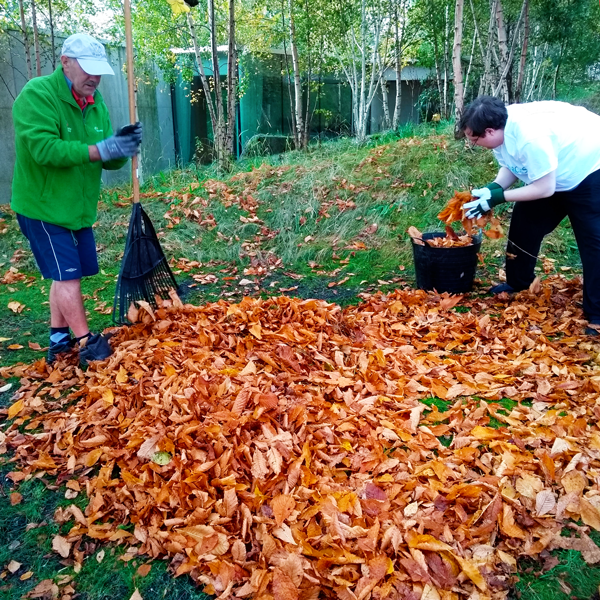
Collecting leaves
From the lawn:
Rather than allowing leaves to form a mat on your lawn, blocking out light and air it is common practice to rake up leaves in autumn to maintain your lawns health. An increasingly popular alternative to using a leaf rake is to set your lawn mower blades high and use it to collect the leaves. This has the added bonus of shredding the leaves which speeds up the breakdown. Or if you are not going to make leaf mold, then going over the lawn and shredding the leaves two of three times when they are dry enough. This should chop the leaf waste into small enough pieces to help prevent them from making an impermeable mat over the grass and speed up the breakdown. Another popular option is a leaf blower. But I’m not a fan of this noisy machinery or any fuel guzzling machinery for that matter. A large part of the joy I receive from gardening comes from doing things as naturally as possible. With as small an impact on our greater environment as possible. But yes there are definitely times when we need mechanical help. I simply like to keep it as minimal and low impact as I can. Gentle gardening being my mindful meditation I’d rather hear the leaf fall than the ‘leaf blower’.
From hard landscaping:
There areas such as patios, paths and driveways, where not removing leaves can be dangerous and unsightly. Besides being notoriously slippy when wet unless you don’t mind staining on paving it is best to clear up leaves before they begin to decompose and leave their mark permanently.
From the local surrounds:
In these times of council cuts leaves often remain uncollected in windblown piles on pavements and urban greenspaces. A ready source if you don’t have your own garden leaf supply or just want to supplement it. Do however bear in mind that if you choose to collect leaves from public pavements, if they pile up beside roads with heavy traffic there will be a residue of pollutants that would best be avoided.
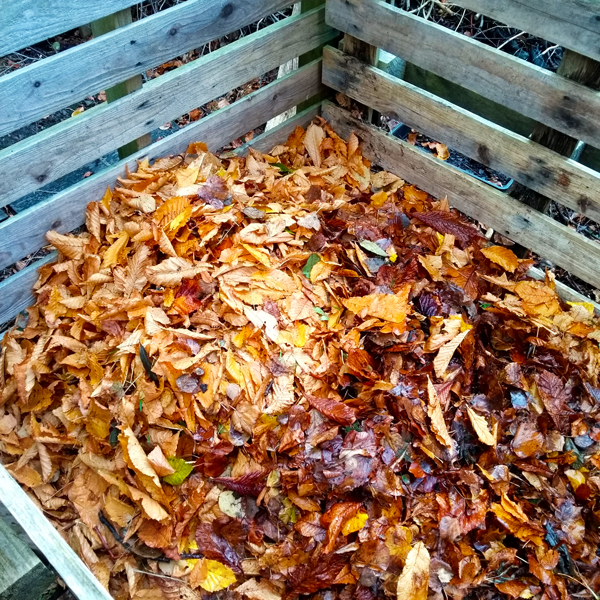
What to do with your collected leaves.
I use a frame of old pallets as containment. It’s cheap, flexible and easy, and the slats let air flow through the leaf stack while keeping it all together. You could use metal mesh or chicken wire. Likewise putting them in black bin liners (biodegradable ones please) will work, ensuring that the leaves are kept moist and airyated by pocking a few air holes through. You will find that freshly collected leaves initially take up a lot of space when they are crisp and newly fallen. For the most part the volume of leaves will decrease in size significantly over a few weeks once they get wet and begin to compress. In the case of leaves shredded and collected using a lawn mower the space taken up from the start is considerably less.
Fungus like moisture and bit of air. To aid digestion so to speak. The actual break down into something usable takes time. Your leaf mould can happily be forgotten about in some quite place out of the way while the Fungi slowly get down to business. If nature doesn’t provide enough rain then you can occasionally stir things up with a garden fork. then give the pile a bit of a dousing to help things along.
By the end of year one you will have an excellent mulching material to use to keep your plants cosy over winter or supress weeds and retain moisture in the growing months.
By year two will have a fine crumbly organic medium that is excellent for making your own composts and bulb fibre by mixing it with loam, grit sand or garden compost depending on the uses you have in mind.
Using leaf mould.

Leaf mold is a fantastic mulch. I have been using it regularly over the past few years on clay soil that was heavily compacted after construction work and it has been very rewarding to see the structure of the soil improve and the planting begin to thrive. Then there is the added bonus (and smug feeling) of a zero carbon footprint, zero cost and full circle process.
I will add a link for recipes to make your own potting and growing mediums shortly.
Happy moulding!!!

